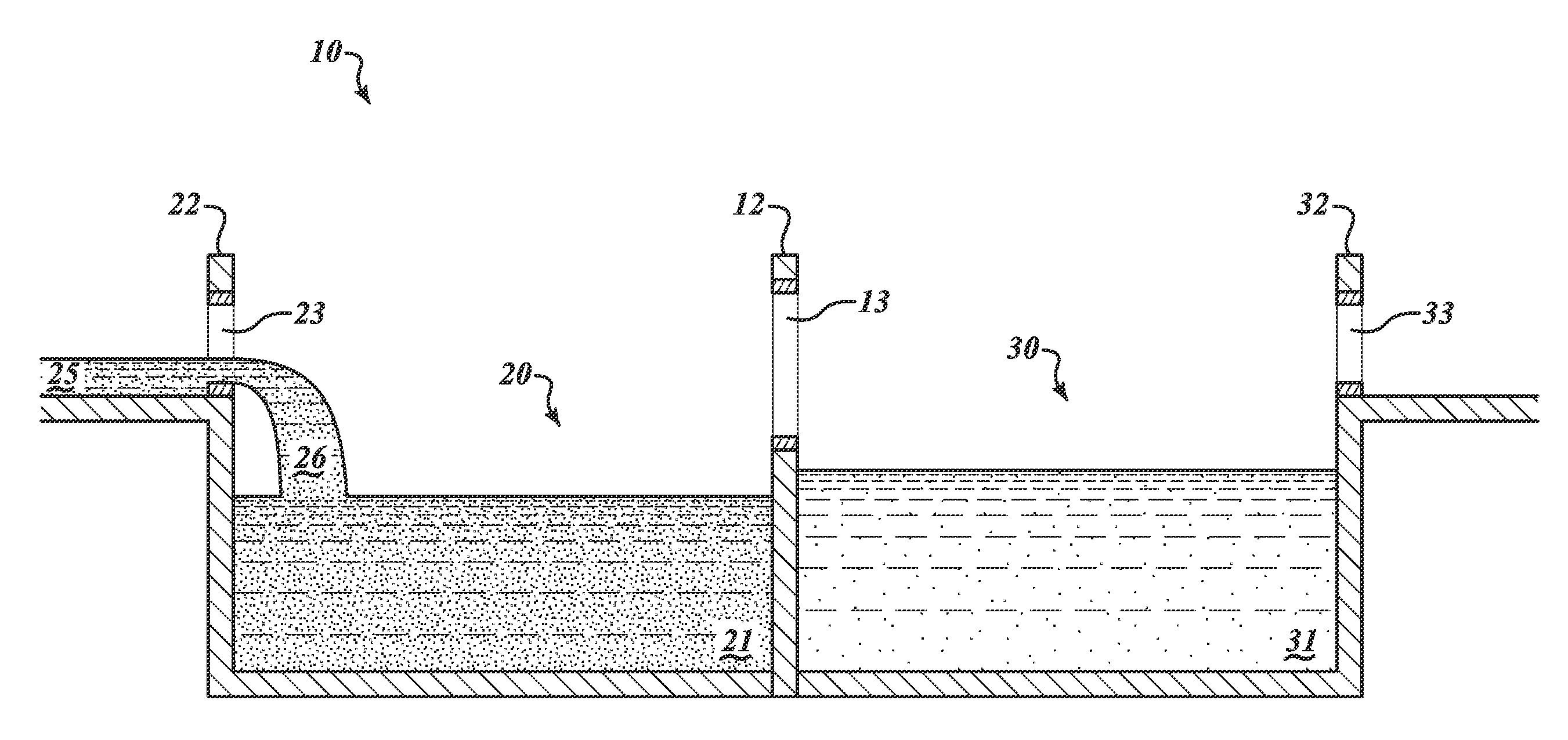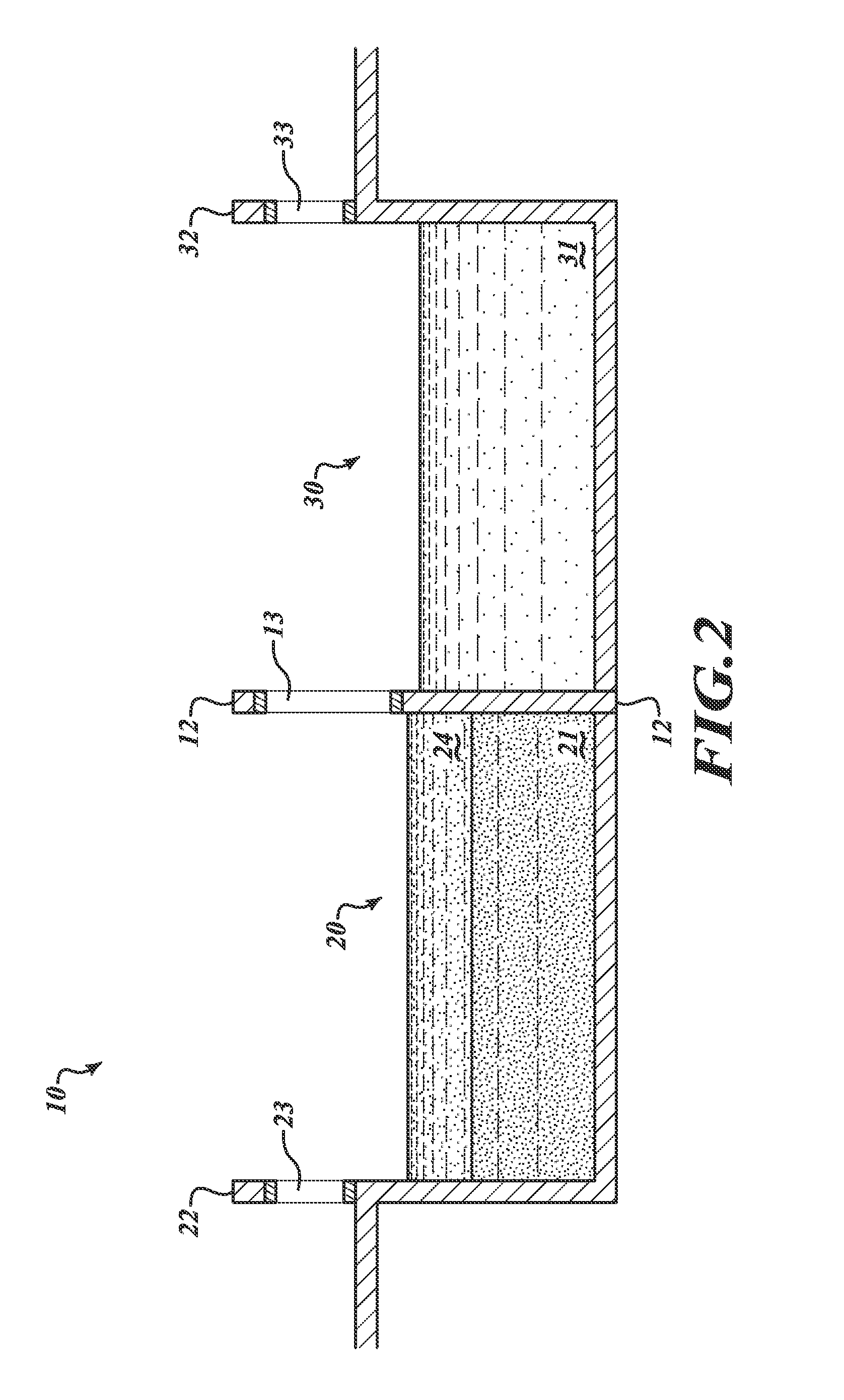Two-tank wiered reservoir and method of use
a technology of manure and water management system, applied in the direction of multi-stage water/sewage treatment, liquid displacement, separation process, etc., can solve the problems of large surface runoff and penetration to the ground water, high abrasion of manure when pumped, and inability to free water and waste water
- Summary
- Abstract
- Description
- Claims
- Application Information
AI Technical Summary
Benefits of technology
Problems solved by technology
Method used
Image
Examples
Embodiment Construction
[0035]A preferred embodiment of the invention is depicted in FIG. 1. A two-tank weired reservoir 10 is depicted as comprising a first tank 20 and a second tank 30 and having a communicating channel controlled by the presence of a weir 13 and in the preferred embodiment, weir 13 can be readily adjusted in height to regulate flow between the first and second tanks 20, 30. In alternate embodiments, the channel might be a pipe or channel, with or without a distinct adjustable weir, the water flow being regulated by the vertical height of the pep or channel relative to the surface levels of the manure present in each of the tanks 20, 30. As explained, it is not a necessary function of this invention that the weir 13 or any pipe or channel serving as the weir, itself be adjustable in height, though that feature is present in the preferred embodiment. No more than an aperture between the tanks is necessary to achieve the purpose of the invention; and, in the mind of the inventor, “weir” as...
PUM
| Property | Measurement | Unit |
|---|---|---|
| width | aaaaa | aaaaa |
| density | aaaaa | aaaaa |
| density | aaaaa | aaaaa |
Abstract
Description
Claims
Application Information
 Login to View More
Login to View More - R&D
- Intellectual Property
- Life Sciences
- Materials
- Tech Scout
- Unparalleled Data Quality
- Higher Quality Content
- 60% Fewer Hallucinations
Browse by: Latest US Patents, China's latest patents, Technical Efficacy Thesaurus, Application Domain, Technology Topic, Popular Technical Reports.
© 2025 PatSnap. All rights reserved.Legal|Privacy policy|Modern Slavery Act Transparency Statement|Sitemap|About US| Contact US: help@patsnap.com



